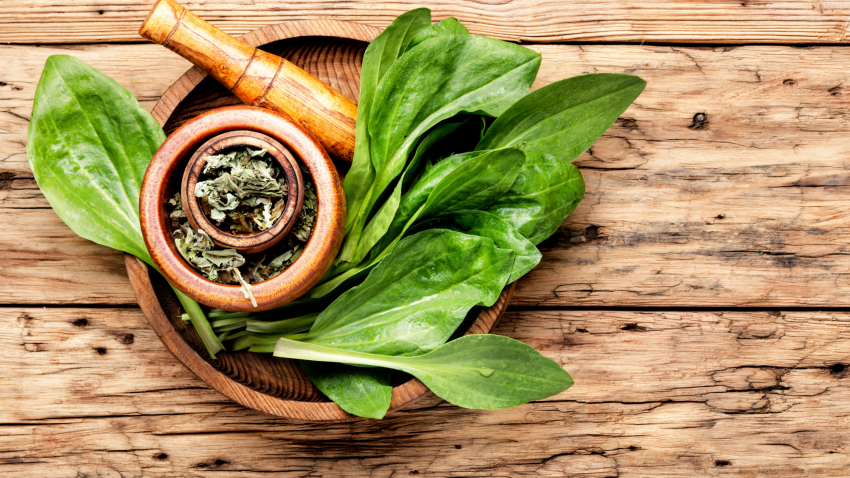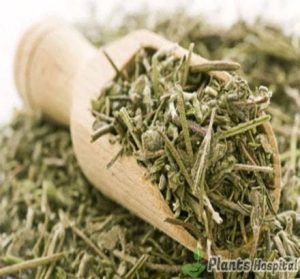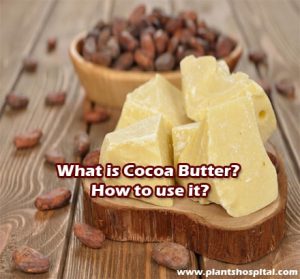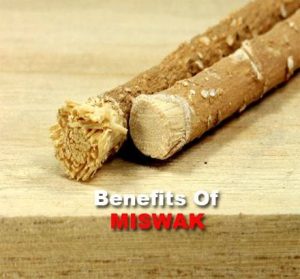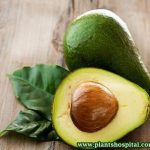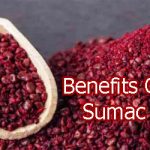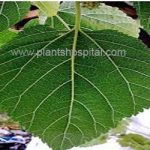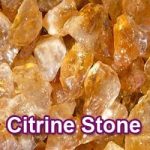More than 100,000 plant species globally, but only a fraction have been researched for medical applications. We have compiled a list of what we believe to be the most promising medicinal plants based on scientific research.
Table of Contents
1. Aloe vera
The aloe vera plant is known for its medicinal powers. It can promote health and healing because of its anti-inflammatory, cleansing, antifungal, antibacterial and antiviral properties.
This plant can treat sores, burns, wounds, insect bites, and skin problems.
Aloe vera can also be taken orally or applied topically to treat other health issues, such as constipation, ulcers, candidiasis, diarrhea, and high cholesterol.
Aloe vera is known to rid the body of toxins that can cause disease. It has antioxidant properties which work to remove free radicals while stimulating the production of white blood cells in the body. This helps boost the immune system.
Aloe vera is also safe for use by pregnant women and children.
For topical purposes, aloe vera can be directly applied to cuts, burns, wounds, sores, etc.
Drinking the juice is excellent for constipation, ulcers, candidiasis(yeast infection), diarrhea, high cholesterol, and detoxification of cells because it has antioxidant properties.
For pregnant women and children, only use the topical method on them.
What’s the medicinal value of Aloe Vera?
The medicinal value of Aloe Vera is that it has antibiotic, antiseptic, anti-inflammatory, and antioxidant properties. It’s also used to treat acne, psoriasis, and skin burns. It can help heal wounds and treat infections.
Aloe vera stimulates the production of collagen, which is what gives skin elasticity and firmness. It’s also used for stomach ulcers and ipsilateral arthritis osteoarthritis.
People who take insulin or drink a lot of alcohol should consult with their doctor before taking aloe.
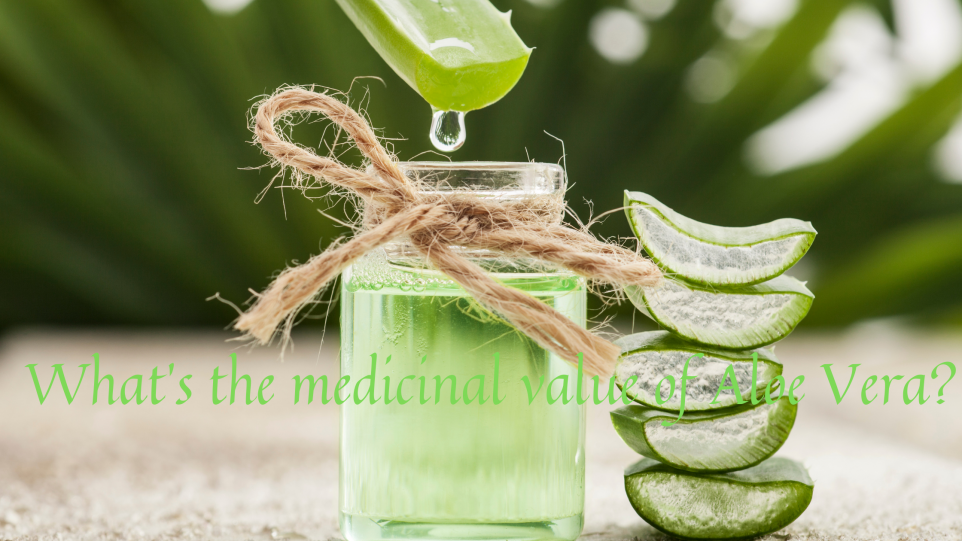
2. Chamomile
Chamomile, often called camomile, is a popular herbal tea that has been used in traditional medicine for centuries. Chamomile comes from the daisy family, and almost all varieties of chamomile are edible.
Chamomile can be eaten raw in salads, baked in bread and cakes, or brewed into a delicious tea. When brewed as tea, chamomile is said to have a calming effect on the body and helps aid sleep. A rinse made from steeping chamomile flowers in water can be used as a mouthwash or applied topically to minor burns and scrapes for relief from discomfort.
Chamomile is most commonly available in the form of chamomile tea.
This herbal tea is readily available both at supermarkets and specialty grocers.
Chamomile is also used in several cosmetic products, including shampoos, lotions, face masks, and bath salts.
Chamomile can be found growing wild throughout most parts of the world. This makes it a great candidate for seeding in any open space as a ground cover, as it can easily take over other undesired plants.
Chamomile is also very easy to grow from seed and does not require too much attention or maintenance. Chamomile seeds should be planted indoors six weeks before the last frost of spring.
For best results, keep the soil consistently moist. Once planted outdoors, chamomile grows best in dry climates with total exposure to sunlight.
Chamomile can be used both fresh and dried to make herbal tea. To brew, use one teaspoon of dried flowers or three teaspoons of fresh flowers for one cup of boiling water. Allow the tea to steep for 10 to 15 minutes before drinking.
Chamomile has been shown to have some positive effects on the body when used as an herbal tea, including:
– Provides relief from menstrual cramps and digestive disorders
– Reduces inflammation and soothes skin
– Suppresses coughs
– Reduces fever
– Relieves muscle spasms and stiffness associated with arthritis
Chamomile is also available in oil or ointment form. While not intended for internal use, this topical application has relieved skin inflammations such as acne, diaper rash, eczema, or psoriasis.
Chamomile is safe for most adults to consume and use topically but should not be given to infants unless approved by a doctor.
Chamomile may also interact with certain medications, including blood thinners and anti-anxiety drugs. Women who are pregnant or nursing should consult their doctor before using chamomile.
Chamomile is considered one of the safest plants to grow in or around your garden.
It is not known to be poisonous to humans, other mammals, birds, or pets.
However, large amounts of chamomile can be toxic to cats! It may still be best to keep your chamomile potted plants outside the house if you have indoor-only cats.
Chamomile is available in most grocery stores, pharmacies, or natural grocers. It can also be planted outdoors in USDA hardiness zones 3 to 9.
How to Grow Chamomile
Chamomile is best grown from seed. Keep your soil consistently moist until your seeds germinate. Once established, chamomile requires very little attention or care.
Chamomile is a hardy plant that can be effectively grown in most climates, even in poor soil conditions.
It does best in total sun exposure but will also grow well indoors or in shaded areas.
It takes about six weeks for your chamomile flowers to fully mature. Once they do, you can harvest the petals and make a delicious chamomile tea.
You can also dry your harvested flowers and use them in potpourri or sachets.
Chamomile is most commonly used in teas and other beverages but can also be used in soups or other recipes. It is excellent added to smoothies!
Chamomile tea contains Linalool, which has been shown to have anti-anxiety properties similar to Valerian Root.
You may prefer this tea over Green Tea as chamomile contains high levels of antioxidants.
A study published in the Journal of Cosmetic Science found that chamomile was as effective as pure Benzoyl Peroxide in treating acne but without the side effects such as dryness and irritation.
Chamomile is available at most pharmacies, grocery stores, and natural grocers. If unable to find it, you can purchase chamomile online.
Chamomile is safe for most adults to consume and use topically but should not be given to infants or young children without approval by a doctor.
Chamomile may also interact with certain medications, including blood thinners and anti-anxiety drugs. Women who are pregnant or nursing should consult their doctor before using chamomile.
3. Onion
Onions have a robust, distinctive bitter taste, so it is best to use them sparingly. However, they are a good source of chromium and vitamin C.
The onion also contains abundant sulfur compounds that give the vegetable its characteristic smell.
In research conducted at the Agricultural Research Service in Beltsville, Md., scientists found that when mice were fed a 10 percent raw onion diet, the rodents’ blood sugar levels dropped by 33 percent.
The scientists believe this is due to an active ingredient in onions called thiosulfate.
The onion’s ability to lower blood sugar could be helpful for people with diabetes who also have heart disease.
Onions contain glutathione, a sulfur-containing compound that helps the liver process fats and boosts immunity.
The onion is a very versatile vegetable, which can be cooked or eaten raw in salads. It has been used for thousands of years as a medicinal herb to treat respiratory problems such as bronchitis and asthma.
Onions are a good source of chromium, which helps keep blood sugar levels under control and boost the immune system.
It is known that raw onions have a hypotensive effect, but this can be offset by the irritating effect on the gastrointestinal tract, especially in older adults with a sensitive gut. Onions can cause flatulence, heartburn, and diarrhea.
Onions are healthy vegetables rich in sulfur compounds, including thiosulfinates, sulfoxides, and other organosulfur compounds that promote good health.
They help the body produce enzymes required to detoxify carcinogens. Onions contain unique flavonoid antioxidants called quercetin, kaempferol, and isorhamnetin to avoid oxidation from low-density lipoprotein (LDL) or bad cholesterol.
Onions contain flavonoids, quercetin, and kaempferol, which give red onions their color. These compounds have anti-inflammatory, anticancer, and antimicrobial properties.
Onions help lower blood pressure, boost immunity and prevent infections. Onions have potent anti-inflammatory and antioxidants properties.
They also contain a compound called dipropyl disulfide, which has been shown to have pain-killing properties.
Onion extract has been shown to have intense antimicrobial action.
The antibacterial activity of onion extract was tested against several strains, including E. coli, Salmonella spp., Shigella flexneri, Pseudomonas aeruginosa, Streptococcus pyogenes, Bacillus subtilis, and Micrococcus luteus.
An onion extract was active against all organisms, with inhibition zones ranging from 13 to 21 mm at a 500 mcg/ml concentration.
Onions contain naturally occurring disulfides such as dipropyl trisulfide, which can help reduce pain and inflammation.
Onions make your breath smell bad because they contain a chemical called thiopropanal-S-oxide, the same as the one produced by skunks to make themselves smell terrible.
They also contain antiviral and antibacterial properties and antioxidants, including quercetin and cepalin.
Onions are a great source of flavonoids, which are known for their antioxidant activity.
The onion is one of the most commonly used vegetables throughout the world. It has been valued for its intense flavor and aroma since ancient times.
The culinary uses for onions extend far back in history. At the same time, modern research has established many health benefits associated with vegetables, including their potential ability to treat or prevent certain cancers, heart disease, and diabetes.
4. Ginger (Zingiber officinale)
Ginger (Zingiber officinale) is a herbaceous perennial plant native to tropical southeastern Asia. It is an aromatic and delicious spice with medicinal properties used for thousands of years in traditional herbal medicine.
It likely works by blocking enzymes that cause pain, inflammation, and body temperature changes.
Some people experience nausea and heartburn from eating ginger, and an overdose of ginger can be fatal to some plants, including the grass species used to make lawn bowling greens.
Ginger is not known to cause any severe side effects in humans, however, though it may interfere with the effectiveness of anticoagulant (blood-thinning) drugs.
Ginger treats motion sickness, morning sickness, nausea due to the common cold or chemotherapy, loss of appetite, and digestive problems.
It is also used for the treatment of arthritis pain, osteoarthritis knee pain in particular. Ginger may also be effective in preventing migraines.
Ginger can be consumed as a spice or herb in cooking or taken as an extract by mouth. Some people apply ginger directly to the skin for pain relief.
Ginger may also be applied topically for headache pain and muscle soreness.
Ginger is also used for menstrual cramps, heavy menstruation, post-operative pain, rheumatic fever, toothache, and vomiting.
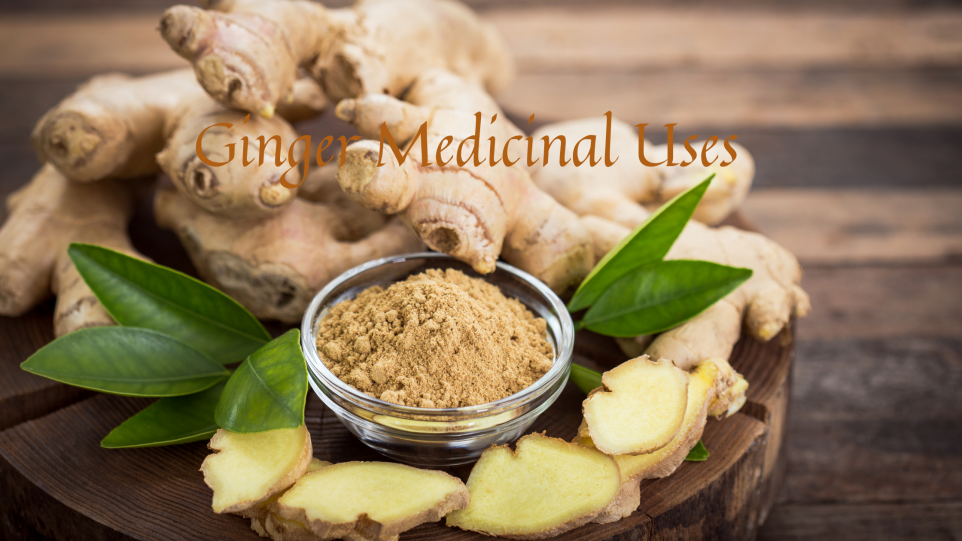
5. Gotu kola
Gotu kola for skin blemishes is widespread in India, where it has been used for centuries.
The plant’s ability to promote tissue growth makes it ideal for treating wounds and preventing scars, while its antimicrobial properties treat skin infections, such as athlete’s foot.
Gotu kola is also used for nervous disorders, including depression and anxiety, and the plant’s anti-inflammatory properties make it helpful in treating arthritis.
Gotu kola can be taken as a tea (1 to 2 cups per day), made into an ointment or poultice for topical use, or applied directly to scars.
Side effects may include nausea, headache, vomiting, and diarrhea.
Don’t confuse Gotu kola with bai nian lian (Centella Asiatica), another member of the same family used in traditional Chinese medicine to improve memory and mental function. Gotu kola is sometimes known as Brahmi.
6. Peppermint
Peppermint is most commonly used to relieve digestive problems, including gas, bloating, stomach cramps, and nausea.
One of the plant’s active ingredients–the oil menthol–has a calming effect on the intestinal wall muscles that helps stop spasms and reduce pain. Menthol also stimulates saliva production to help with digestion.
Some studies suggest that peppermint oil may help prevent the stomach upset associated with the use of H2 blockers, drugs commonly used to treat heartburn and acid reflux.
One study found that people who took enteric-coated peppermint oil capsules twice a day for four weeks experienced significantly less heartburn than placebo pills.
7. Lavender
Lavender is a fragrant herb that’s thought to possess antiseptic and anti-anxiety properties.
Some scientific evidence suggests it may help reduce anxiety in mild to moderate depression, and when added to massage oils, it can help ease labor pains.
Lavender is used in aromatherapy to aid sleep problems such as insomnia and in many lotions and shampoos for its fragrance.
Lavender has also been reported to act as an anticonvulsant in some lab studies, suggesting it may have value in the treatment of epilepsy.
However, most evidence of lavender’s effectiveness is anecdotal or based on traditional use of the herb rather than scientific studies.
8. Echinacea
Echinacea is considered one of the best herbal cold remedies; it’s used to prevent infections and shorten the duration of a cold or flu.
Laboratory research suggests that Echinacea may possess antioxidant, anti-inflammatory, and immune-boosting properties. However, most clinical evidence indicates that echinaceainduced short-term benefits don’t last long.
A review of 24 studies involving more than 2,000 people found that those taking Echinacea had a 50 percent greater chance of fighting off colds than those taking placebos.
But most studies show no such benefit after the first three to four days of treatment and that the herb’s effectiveness may decline over time.
Larger doses of Echinacea are generally suggested for shortening colds rather than preventing them.
Also, some scientists believe that taking Echinacea at the onset of symptoms is more effective than waiting until later in the illness to take it.
Echinacea appears to be safe for most people, but it can cause allergic reactions in rare cases.
9. Eucalyptus
Eucalyptus oil is an effective decongestant when added to steam or used as a chest rub. The herb may also have antibacterial properties and has been reported to help treat respiratory infections such as bronchitis, whooping cough, and asthma.
Eucalyptus leaf may also help to reduce pain from hemorrhoids when applied directly to the area.
In animal studies, eucalyptus oil demonstrated an ability to stimulate salivary flow, supporting its traditional use as a mouthwash or gargle for treating sore throats or gingivitis.
Eucalyptus oil is generally considered safe when used at home, although some people may experience mild stomach upset or skin irritation if applied to the skin.
There haven’t been any reports of severe side effects from using eucalyptus oil, but because there’s a lack of research on its use for other conditions, it’s best to consult your doctor before using it.
10. Licorice root
For 2,000 years, licorice root has been used in traditional medicines to treat various ailments, including heartburn and peptic ulcers.
It’s effective for down-regulating acid production in the stomach, making it useful for conditions caused by overproduction of stomach acid.
Licorice root may be taken either as a tea or supplement form to treat stomach distress and reduce inflammation.
Higher doses of licorice root may cause fluid retention, exacerbating some medical conditions such as heart disease and high blood pressure. It can also elevate blood potassium levels, which may be an issue for kidney problems.
Licorice has been reported to interact with several medications, including corticosteroids, estrogens, and insulin.
11. Goldenseal
Goldenseal has been used for centuries as an herbal treatment for bacterial infections of the mouth, throat, skin, intestines, and vagina.
An antimicrobial compound in goldenseal called berberine has been reported to be effective against various microorganisms, including some species that are resistant to antibiotics.
Berberine has also been shown to have antiviral properties and may help fight the influenza A virus.
However, due to the lack of studies testing goldenseal’s effectiveness in humans with bacterial or viral infections, its use for these conditions is not recommended.
Goldenseal may cause side effects such as cramping, diarrhea, vomiting, and sedation when used in high doses.
Taking goldenseal during pregnancy is not advised due to insufficient scientific evidence on possible harmful effects in developing babies and can cause uterine contractions in pregnant women.
12. Oregano
Oregano is used to season foods. It also contains two constituents, thymol, and carvacrol, potent antimicrobial agents against food poisoning causing bacteria such as Bacillus cereus, Staphylococcus aureus, Salmonella spp., Shigella spp., Clostridium perfringens, Listeria spp., Vibrio parahaemolyticus, and others.
Oregano also has anti-allergic, antiasthmatic, antioxidant, antitumor, hypotensive actions.
It is effective in treating cardiovascular diseases such as high blood pressure and atherosclerosis by inhibiting LDL oxidation.
It has spasmolytic activity on smooth muscle hence used to treat bronchitis, coughs, asthma, and other respiratory problems.
It is also used to treat the common cold, flu, fever, bloodshot eyes, nose bleeding, toothache, migraine headache, earache, jellyfish sting, etc.
Oregano oil is toxic due to the presence of thymol and carvacrol. Oregano oil may cause gastroenteritis with abdominal pain, diarrhea, nausea, and vomiting if taken orally in large doses. It is also known to produce contact dermatitis.
Oregano (Origanum vulgare) is native to Europe, North Africa, and the temperate zones of Asia. It now grows wild throughout many parts of the world. It is a perennial herbaceous plant growing to 60–100 cm tall with opposite, light green, silvery-hairy leaves and white or pink flowers.
13.Tumeric (Curcuma longa)
Turmeric is a perennial plant with thick rhizomes and bright yellow flowers. It is used to flavor foods, especially in Indian cooking.
Curcuminoids isolated from turmeric have been well known for their antioxidant, anti-inflammatory, and anticancer activities.
The beneficial effects of curcuminoids are mainly attributed to their antioxidant, anti-inflammatory, and anticancer activities.
Hence it is used to treat stomach ulcers, peptic ulcer disease, gastroesophageal reflux disease (GERD), colitis, irritable bowel syndrome (IBS), etc.
It has also been found to prevent colon damage due to long-term ethanol consumption.
Curcumin treats bone injuries, burning sensations, skin diseases like psoriasis and eczema, etc.
Tumeric has been shown to prevent skin cancers in mice. Curcumin has low bioavailability, which can be increased by turmeric essential oils since turmeric oil also contains curcumin.
Curcuma longa (turmeric) is native to southern Asia and cultivated in India, China, etc.
It is a perennial herbaceous plant growing up to 1.5 meters tall. The underground rhizomes are ground into a deep orange-yellow powder commonly used as a spice in curry powders for its pungent flavor and bright yellow color.
14. Ginger root extract
It helps reduce nausea and vomiting associated with motion sickness, morning sickness, and chemotherapy.
A study of patients undergoing chemotherapy for cancer treatment found that those who took ginger root experienced “significant relief” from nausea compared to the placebo group.
The effect was most pronounced when patients combined ginger with other anti-nausea medications.
A pilot study found that ginger extract, when taken with cinnarizine, was markedly more effective in preventing seasickness than cinnarizine alone.
Ginger is available as a tea or tincture, prepared at home or obtained from most health food stores.
15. Basil
Basil is a powerful plant that dates back to ancient times. Ancient Egyptians used basil for embalming, and Emperor Charlemagne prized it so much that he passed laws protecting it.
Basil has also been called the “Herb of Kings” because it was so highly valued throughout history by everyone from King Solomon to Catherine de Medici, who made it a popular herb in France.
Today, basil is still treasured as an aromatic culinary herb as well as for its medicinal actions.
Scientific Name (s): Ocimum tenuiflorum; Ocimum gratissimum; Ocimum sanctum; Ocimum americanum – also called “Wild Basil.”
What is it used for?
For countless centuries, basil has been prized as a culinary herb and seasoning. In India, people have relied on the solid antiseptic properties of basil to heal wounds and fight infection.
It contains eugenol, an oil slightly similar to the oil of cloves, which has antiseptic properties.
However, for basil to be effective as an antiseptic, it must be boiled first for the active ingredients to penetrate the leaves.
It has also been used topically on skin infections and abscesses because of its ability to fight bacteria. The leaves are also used to treat tummy aches and common colds.
16.Clove
Syzygium aromaticum – Myrtaceae – The clove tree is an evergreen that grows 8–12 m tall, with large leaves and crimson flowers grouped in numerous, dense clusters.
It is believed that its native habitat includes Indonesia, tropical Asia, Philippines. And Papua New Guinea, where it has been cultivated for more than 400 years. The clove tree is now grown worldwide in tropical regions of India, Sri Lanka, Madagascar, Zanzibar, and the Caribbean Islands.
Cloves are harvested primarily in Indonesia and Madagascar. Cloves are mainly used as a spice for food dishes and beverages because their unique, essential oil content makes them indispensable in most curries and meat dishes.
The plant’s dried fruits are also used to produce a popular incense called agarbathi, which is burned in homes and places of worship to create a distinct fragrance.
17.Cayenne pepper
The dried fruit is the ordinary cayenne or Guinea spice, red pepper, chilies, or capsicums. Capsaicin is responsible for its pungency. The plant has other commercial uses too-such as the manufacture of dyes, etc.
It contains vitamin A and vitamin C. Its leaves stimulate digestion and appetite, strengthen the stomach and bowels, and help with relief from rheumatism.
Its fruit is used as a carminative (intestinal antispasmodic) agent against flatulence etc.
It can be powder form, or it can come in capsules. A good herbalist will advise you on the dosage.
In another form, cayenne pepper is used for painful nerve inflammation such as fibromyalgia and arthritis.
In a study conducted by Dr. Daniel J. Wallace at Duke University in 2004, patients who took capsaicin cream twice a day reported 40 percent pain reduction in less than two weeks. Capsaicin cream is available over the counter.
In the August 2004 issue of The Journal of Alternative and Complementary Medicine, a recent study reported that a topical extract from red pepper was as effective against pain associated with osteoarthritis as ibuprofen.
As with any dietary supplement, check with your doctor before trying it.
18.Blueberry juice :
Phytonutrients called anthocyanins to give blueberries their deep blue-purple color.
They’re powerful antioxidants that help protect cells from free radical damage and inflammation. Blueberries are also a good source of resveratrol, which may have cardiovascular benefits.
Blueberry Side Effects: Not enough is known about the use of blueberry during pregnancy and breastfeeding. Stay on safe
foods/herbs during this time.
19.Valerian
Valerian is a perennial flowering plant native to Europe and Asia. It is known for its calming effects on the mind of humans when consumed in small doses.
Valerian has been used in traditional medicine for thousands of years as it has sedative, antispasmodic, hypotensive, carminative, and stomachic properties.
In modern times, Valerian is well known for its benefits in treating insomnia and anxiety disorders. The relaxing effects of Valerian root make it a popular supplement among people suffering from these conditions.
The plant contains a volatile oil that produces a camphoraceous odor and natural supplements in essential oils.
This oil contains valerenic acid, which is believed to be responsible for the plant’s sedative effects. Valerian can also be made into a non-alcoholic herbal tea that helps fight insomnia and other sleep disorders.
20 . Pumpkin
Pumpkin has been cultivated across the world as a source of food for many centuries. In modern times, it is also grown as an ornamental plant as well as a medicinal one.
Pumpkin leaves are used to make tea which helps in reducing fevers and inflammations. “It can be used externally to treat boils, abscesses, and skin ulcers.
The seed, mixed with lemon juice, is used to treat intestinal parasites, and the oil from the source can be applied externally to treat scabies.”
(1)Pumpkin is also rich in Vitamin C, and the seeds are used to purify water (2). Pumpkin seeds can be made into a potent antioxidant-rich tea known to help weight loss (3).
The Greek Name for pumpkin is ‘pepon’ which means “large melon,” perhaps about the large, roughly pumpkin-shaped fruits of C. moschata.
The word pumpion (later contracted to “pumpkin”) was adopted in Old English from French Pompe –- “Cucurbitaceae” (the gourd family) ultimately derived from the Greek pepon. The Italian form of this word is “Zucca,” while Spanish and Portuguese retain the original Greek Name, zu – ca.
A pumpkin is a cultivar of a squash plant, most commonly of Cucurbita pepo, that is round, with smooth, slightly ribbed skin and deep yellow to orange coloration. The thick shell contains the seeds and pulp.
Some exceptionally large cultivars of squash with similar appearance have also been derived from Cucurbita maxima.
Specific cultivars of squash derived from other species, including C. Moschata and C. Mixta, can sometimes be lumped with the pumpkin in North America because they are just as expected and popular.
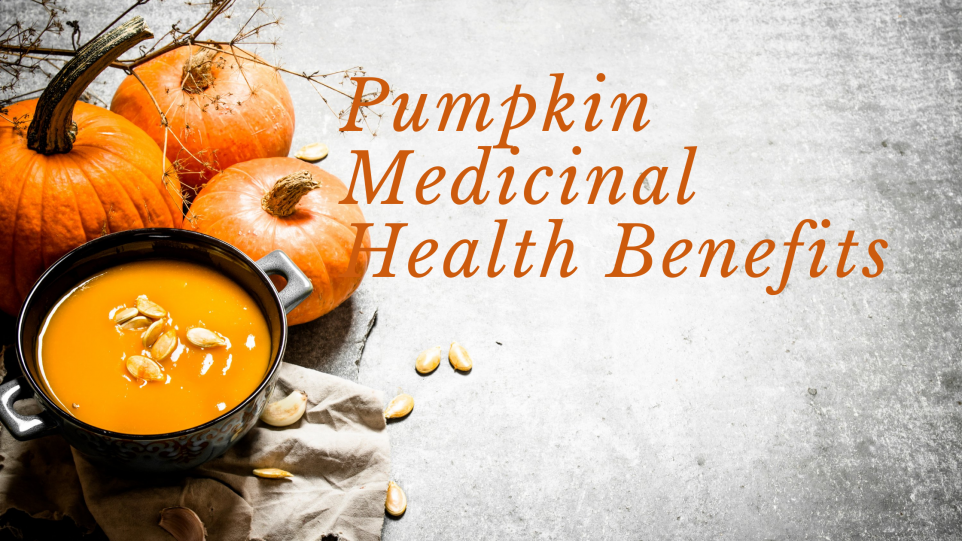
21 . Damiana (Turnera diffusa)
Tones and strengthens the nervous system. Good for depression, anxiety, neuralgia, and exhaustion.
Treats digestive disorders such as dyspepsia, constipation, and diarrhea.
Beneficial to the urinary system as well by increasing urine flow and reducing bladder inflammation. It can be used orally or topically to heal skin infections.
Damiana is common in Mexican herbal tradition, where it was used to increase sexual desire by smoking the leaves. The smoke smells like a sweaty ball player! Ancient Mexicans also drank Damiana tea to cure digestive disorders.
Latino families make an infusion of Damiana leaves and drink it as an aphrodisiac for young boys before their first communion.
This drink is also given to boys as a puberty rite. It is believed that the tea will help them develop into good lovers.
In Cuba, Damiana tea is given to lactating mothers who have lost their milk. The herb stimulates breast milk production and the flow of milk from the nipple.
Damiana tea is given to them as a mild sedative for children’s fever, coughs, and stress.
Damiana has been found to produce an antidepressant-like effect in mice, attributed to components of its volatile oil. The plant also contains the alkaloid stimulant hordenine.
Natives used this herb for abdominal pain relief by straining the leaves through cheesecloth and adding a few drops of the liquid to a cup of warm water.
22 . Tumeric (Curcuma longa)
Treats digestive disorders such as indigestion, bloating, colic, and diarrhea. They are used topically to heal skin infections such as acne, psoriasis, and eczema by fighting bacteria and reducing inflammation.
A natural anti-inflammatory agent, Tumeric can relieve arthritis symptoms such as swelling, pain, and stiffness by blocking the enzymes that cause inflammation.
It has been found to stop the growth of colorectal cancer cells by causing cell death, which may make it a potential treatment for preventing or halting colon cancer tumors from growing and spreading.
It acts as a natural antiseptic and helps the body ward off infections and diseases. It is used to treat bacterial, fungal, and viral infections such as staph and is used topically on minor cuts, burns, and scrapes to speed up healing time by fighting disease.
It helps regulate blood sugar levels, making it beneficial for people who have diabetes.
Tumeric has been found to slow or stop the growth of several cancer cells by blocking a protein that allows tumor cells to continue multiplying, suggesting the herb may one day be used in anticancer drugs.
Tumeric can also kill ovarian cancer cells and halt prostate-specific antigen (PSA) production – a protein that often surges when prostate cancer is present.
This herb has anti-inflammatory and antioxidant properties, making it practical for easing the pain and swelling of arthritis and other inflammatory conditions such as Crohn’s disease. Tumeric can also relieve digestive discomfort by soothing gastric ulcers and calming colitis symptoms such as diarrhea.
23 . Yerba Mate (Ilex paraguariensis)
An effective remedy for chronic fatigue syndrome, kidney disorders, and obesity.
It contains caffeine which stimulates the central nervous system to improve mental alertness and well-being.
Improves digestion by stimulating the production of saliva, gastric juices, and bile flow.
Used topically, it helps wounds heal quickly and reduces inflammation.
It is proven to be more effective than typical coffee at enhancing mental alertness, providing energy, and maintaining concentration without the jitters associated with caffeine intake. Effect on stomach acids prevents heartburn while relieving indigestion and abdominal discomfort.
The high antioxidant content of Yerba Mate increases the production of white blood cells – immunoglobulins that fight infection.
It contains vitamins A, B1, B2, C, and E, which combat free radicals that may cause cancerous cells to develop.
Antioxidants are said to slow down the aging process by preventing or minimizing cell damage caused by unstable molecules called free radicals.
Known as “the drink of the gods,” Yerba Mate contains 24 vitamins and minerals, 15 amino acids, abundant antioxidants, and numerous other nutrients that have been shown to have a beneficial effect on health.
24 . Ginkgo Biloba (Ginkgo biloba)
A powerful antioxidant protects the body from free radicals that cause aging, heart disease, and cancer. Effective at fighting cognitive decline associated with Alzheimer’s disease by increasing blood flow to the brain.
Treats depression, anxiety, tinnitus, and vertigo. Suitable for people living with asthma because of its ability to increase oxygen flow to the lungs. Reduces inflammation caused by arthritis and allergies while enhancing memory function in older adults.
May help treat or prevent cancer by inhibiting tumor growth and inducing cancer cell death. One study found it effective in shrinking aggressive prostate tumors.
Ginkgo also enhances blood vessel formation, making it a potential treatment for peripheral arterial disease, diabetic neuropathy, and sexual impotence.
In addition to its antioxidant properties, studies have found Ginkgo to help treat several types of cancer. It blocks mechanisms that allow tumors to develop and spread throughout the body and induces programmed cell death (apoptosis) in cancer cells.
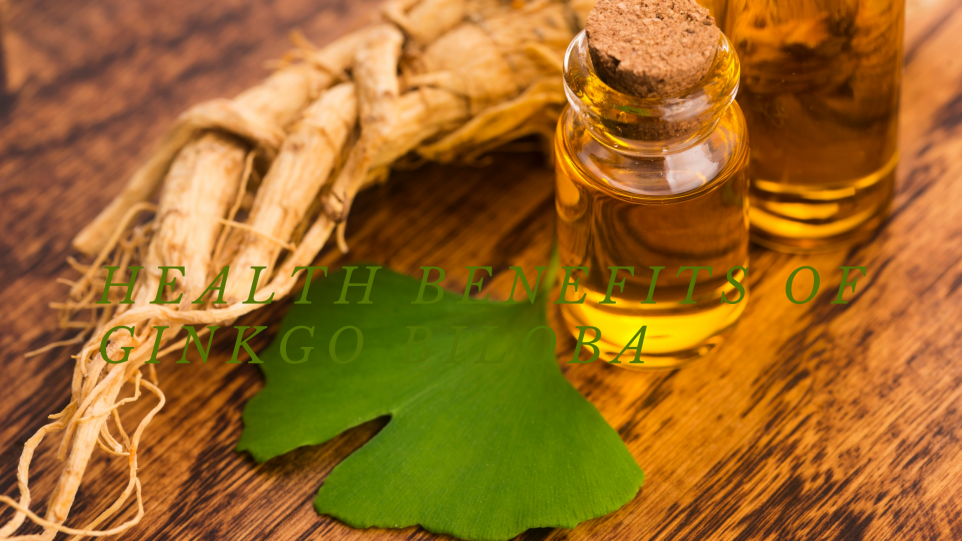
25. Cat’s claw (Uncaria tomentosa)
Stem bark Cat’s claw has been shown in research to have antibacterial, antiviral, anti-inflammatory, antifungal, and anticancer activity. It is one of the most important plants for immune support.
The active ingredients are glycoproteins called pentacyclic oxindole alkaloids (POAs), known from research to boost the body’s immune system by increasing interferon production and other messengers that fight disease.
Cat’s claw is effective against many infections, including HIV, herpes, malaria, allergies, and Lyme disease.
In Peru, it is known as “the plant of immortality.”
Mark Blumenthal, the founder of the American Botanical Council, states that the cat’s claw possesses “[a]dvanced detoxification pathways” and is one of the most important plants for liver support.
He also lists 100 conditions that it is used to treat. Cats Claw can be combined with other immune-system herbs like astragalus, Echinacea, and Siberian ginseng.
Cat’s claw is generally taken as a tincture or in capsules. Some people make herbal tea with it.
Dosages will vary according to the extent of your infection – you should work with your health care provider if using a cat’s claw for anything more than immune support.
You can find cat claws in health food stores, herb stores, and online. It is not known to cause any side effects, but some people may experience stomach upset or nausea when taking it. Other possible minor side effects are skin irritations, tiredness, sweating, and diarrhea. People with asthma or epilepsy should avoid this herb.
26 . Elderberry
Elderberry is a genus of flowering plants in the family Adoxaceae. The various species are native to Europe, Asia, northern Africa, and North America.
All parts of the plant are poisonous if incorrectly prepared, but many people, including children, have been poisoned while making elderflower fritters.
The ripe blackberries can be eaten raw, though some people find them too sour. However, the fruit must be fully mature to have the full flavor.
They are widely grown for hedges because of their very thorny stems and can maintain a living fence. The fruits are rich in iron, calcium, magnesium, vitamin C, and dietary fiber. They contain many antioxidants, flavonoids, and anthocyanins.
The leaves are rich in vitamin C but have poor nutrient value compared to the berries.
The use of the fruit or leaves for this purpose is not recommended, owing to the risk of confusion with other edible members of the elderberry genus that look similar but can be very toxic if consumed.
27 . Evening primrose ( Oenothera biennis )
Evening primrose is native to North America and grows along the banks of rivers. The plant’s underground root system has an abundance of oil that can be pressed out. Since ancient times, evening primrose has been used for its medicinal properties.
The Native Americans told their children how evening primrose came into being, saying it came out of the earth as a gift to men and women. The plant is also known as sundrops (the flower opens in the evening) or king’s cure-all.
When flowering, the plant gets top priority with bees; if you want to collect some oil for your use, simply cover the flowers with a piece of paper or cloth.
In this way, you’ll get the oil that bees would typically collect for their use. Evening primrose oil contains two components: ursolic acid and Oenothera oil. The plant’s leaves have more of these substances than do its roots.
The oil has a pleasant nutty flavor and a golden color. It’s good for both hair and skin, as it contains a respectable amount of essential fatty acids ( linoleic acid ).
Evening primrose oil is used as an emollient to treat skin dryness, itching, sunburn, acne, rashes from poison ivy, insect bites, eczema, and skin ulcers. It is also used as a hair treatment to strengthen the hair and stimulate growth.
The oil can be taken internally (1 tablespoon daily) or applied topically (2 tablespoons of oil in 1 cup of water). If you’re taking it orally, keep in mind that oils high in linoleic acid can thin the blood, which may increase the risk of bleeding in patients with blood-thinning medications or who are taking large amounts of aspirin. In addition, evening primrose oil is contraindicated for patients who tend to develop eczema.
As with many herbal products, evening primrose oil’s most remarkable therapeutic properties are attributed to its placebo effect.
28.Wild yam extract
Wild yam (Dioscorea villosa) belongs to the family Dioscoreaceae. It is one of the noblest plants that humankind has discovered since ancient times till now.
It has been used for thousands of years as a folk medicine, and it is still currently in use for treating women’s diseases, particularly those related to pelvic and abdomen pain.
The primary active components of wild yam are diosgenin and progesterone, which relax smooth muscles in the pelvic cavity, improve blood circulation to the uterus, and alleviate abdominal pains associated with menstrual disorders.
Diosgenin is also used for treating asthma, inflammation of the cervix, post-partum abdominal pain, uterine bleeding, dysmenorrhea, and other gynecological diseases.
Wild yam extract is a mixture of natural substances from wild yams. In addition to diosgenin and progesterone, it also contains saponins, glycosides, and polysaccharides, which have important physiological activities in curing gynecological diseases.
Wild yam extract can be used for making tablets, capsules, and other oral medications.
The dosage of the active ingredients in wild yam extract is 1-5g per day by oral administration or 4-10mg three times daily by intravenous administration.
Combined with traditional Chinese medicine, wild yam extract is better for women to treat gynecological diseases.
29.Raspberry
English Name: Raspberry, Red Raspberry
Family Name: Rosaceae
Habitat: Widely distributed in temperate regions of the Holarctic. Also found in North America, South America, and East Asia.
Growth Habit: Shrubby perennial with long slender stems. Shoots are hairy when young but become smooth later on with the heightening of the plant.
Parts Used: Ripe fruits, leaves, and roots.
Uses: Raspberry is used in medicine as a diuretic, laxative, emmenagogue, and tonic.
They are also used to treat diarrhea, jaundice, gonorrhea, and sore throat.
Fruits are better known for their use in treating kidney stones, bladder infections, and rheumatoid arthritis.
Leaves are used for coughs, chest pains, and the prevention of hair loss in menopausal women.
The root is better known for its astringent action.
Studies show that Raspberry is rich in organic compounds such as organic acids, sugars, vitamins, and minerals which have antibiotic effects.
Ingestion of the fruit helps in fighting kidney stones and bladder infections.
Raspberry is a natural antioxidant that has anti-inflammatory properties. It reduces pain, swelling, and inflammation. It also stimulates hair growth.
Raspberry leaves are used for coughs, chest pains, and hair loss prevention in menopausal women. Studies also show that Raspberry leaves help in fighting kidney stones and bladder infections.
30.Rosehips (Rosa spp.)
For centuries it has been used for its beneficial medicinal properties. Its particular value is due to the high content of vitamin C.
It contains essential minerals and trace elements that fight infections and diseases of all kinds.
In folk medicine, it was once considered a cure-all or universal remedy.
The plant is used internally in the treatment of respiratory tract infections, such as colds and flu. It is also used for digestive ailments such as gastritis or ulcers.
Internally it has been used to treat arthritis, gout, and rheumatism because it acts as a diuretic and antioxidant.
Externally, rose hips have been used as a herbal remedy to treat skin inflammations, such as eczema and psoriasis.
It is also known to relieve arthritis symptoms when used topically, but it is most effective when taken internally.
The tea can be made from fresh flowers or hips that are rich in fruit. In general, the hips are harvested after the first frost or ripened in autumn. In this way, their content of vitamin C is increased.
31.Milk thistle
The seeds of Milk thistle have been used as a liver remedy since ancient times. The seed contains a group of active ingredients known as silymarin, the extract from milk thistle that is most beneficial for your liver.
Milk thistle has antioxidant and anti-inflammatory properties, which can boost the liver’s ability to heal itself. The liver is responsible for at least 500 different bodily functions, including digestion, storing energy from food, and releasing it when the body needs it. Your liver is essential in maintaining good health.
According to the Memorial Sloan-Kettering Cancer Center, milk thistle has also been shown in some studies to slow down tumor growth in humans.
Silymarin also stimulates protein synthesis in skeletal muscle cells, which can help strengthen your muscles after exercise.
Milk thistle is one of the best liver herbs known today. It contains powerful antioxidants that can slow down tumor growth and strengthen muscle tissue after exercise.
Milk thistle can be purchased as a tincture, infusion, or capsule.
32.Cumin – Cuminum cyminum
The cumin plant grows 40-50 cm tall and has long pinnate leaves. Its flowers are white, and the fruit is a three-sided, brown seed.
Cumin seeds come from the dried fruits of the herb Cuminum cyminum, an annual herb in the parsley family (Apiaceae) that is widely cultivated in the Mediterranean region and South Asia. It also goes by the names “Roman coriander” or “black cumin.”
Cumin has been used since ancient times as both a culinary spice and traditional medicine for its analgesic, anti-inflammatory, digestive, antibacterial properties.
Cumin powder contains 1 to 2 percent essential oil comprised primarily of p-cymene, Linalool, and carvacrol.
Cumin also has been shown to decrease the growth of certain bacteria, including E. coli and staphylococcus aureus.
Cumin seeds have been used in traditional Middle Eastern and Asian cuisines for thousands of years. Modern research has demonstrated that cumin extract has anti-inflammatory, analgesic (pain relief), and antioxidant properties.
Cumin extract is typically sold as an herbal supplement in capsule form. A typical dose is 2 g three times daily, typically in capsules containing 500 milligrams of powdered cumin extract standardized to 95 percent carvacrol.
Cumin is considered Pregnancy Safe and Lactation Safe.
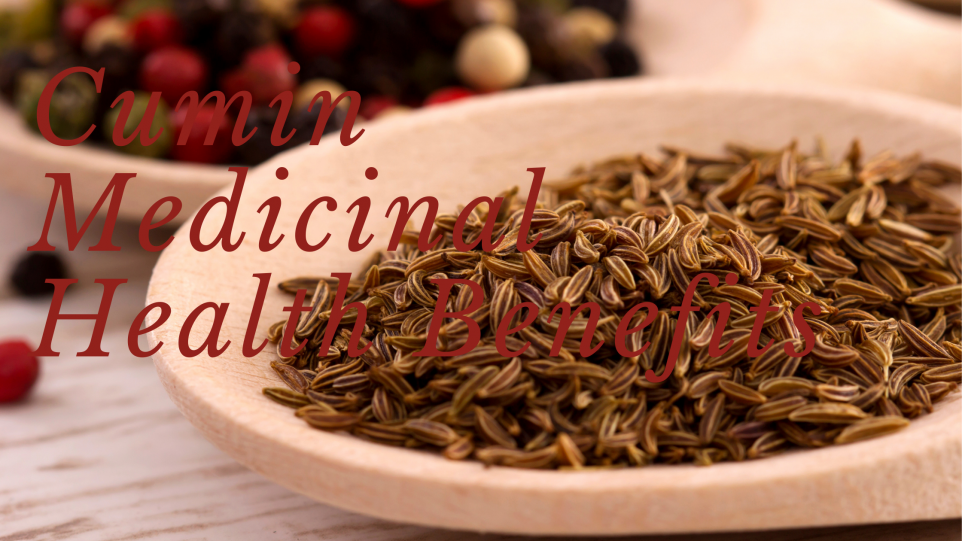
33.Fenugreek
(Trigonella foenum-graecum)
A popular Mediterranean and Indian spice, fenugreek, is popping up in trendy coffee shops. It is said to be beneficial for asthma, diabetes, indigestion, and menstrual problems.
Ancient Egyptians used fenugreek to restore their youth. According to the Ebers Papyrus, a 15th-century BC document, fenugreek was also prescribed for impotence.
Fenugreek seeds are considered one of the most effective home remedies for painful menstruation or miscarriage. They contain phytoestrogens that help protect against osteoporosis. It is thought to lower LDL cholesterol and to help prevent cancer, especially colon cancer.
The seeds also have a laxative effect and treat indigestion, stomach ulcers, and diabetes.
Fenugreek contains antioxidants, minerals, and vitamins A, C, and K. It effectively treats diabetes and high cholesterol. It also has anti-inflammatory and antibiotic properties that help aid digestion, fights infections, and reduce skin inflammation.
Use as a tea or infusion, but fenugreek is often used as an ingredient in curry powder, chutneys, and curries to add flavor.
Conclusion on Medicinal Plants
These plants may not be readily available in your backyard or local grocery store, but they can still benefit our health and well-being if we take advantage of them.
From anti-inflammatory agents like a ginger root to antibacterial remedies such as garlic cloves, these top 100 plants offer an assortment of therapeutic qualities for various ailments.
By taking a closer look at this list, you’ll also see some other medicinal features, including antioxidant powerhouses like blueberries and omega-three rich salmon fish oil tablets.
There is no one-size-fits-all approach to healing ourselves naturally; however, understanding which plants work best for specific conditions.
Do you have any questions in regards to the use of medicinal plants ? let us know in the comment section below.

